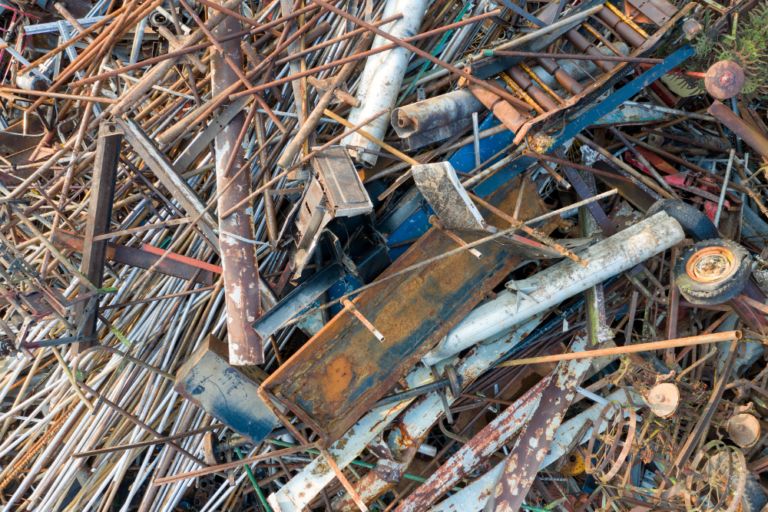
How to Maximize Your Home Space with a Junk Cleanout
August 8, 2025
Top 5 Reasons You Need a Residential Junk Removal Service
August 8, 2025How to Handle Bulky Items During Your Junk Removal
Understanding the Challenges of Bulky Items
Dealing with bulky items during a junk removal can feel like an uphill battle. The sheer size and weight of objects like old couches, mattresses, or large appliances make them difficult to move without proper planning. It is important to assess the space around these items and identify potential obstacles that could cause damage or injury. By visualizing the path and planning the lift, you can avoid common pitfalls and ensure a smoother removal process. Additionally, having the right equipment such as dollies, lifting straps, or protective gloves can greatly reduce the strain and risk involved. Approaching the task with care allows for a safer and more efficient experience.
Breaking down the removal into smaller, manageable steps can also help. Sometimes disassembling furniture or removing detachable parts from appliances makes them easier to maneuver. Clearing a clear path and coordinating with others if needed ensures that heavy objects are moved without stress. Thoughtful preparation can turn a daunting task into one that feels achievable, giving you confidence to tackle even the most cumbersome items without unnecessary frustration.
Preparing Your Space Before Removal
Preparation is key when handling bulky items. Clearing the area around the item ensures that there is enough room to maneuver and reduces the risk of accidents. Remove obstacles such as rugs, décor, or small furniture to create a clear path for transportation. Consider the terrain and surfaces you will be moving the items across, as slippery floors or uneven ground can pose hazards. Protecting walls and door frames with padding or blankets can prevent scratches and dents during the process. Taking the time to plan and protect your space beforehand will save effort and minimize damage.
In addition to physical preparation, organizing helpers and establishing clear communication is vital. Knowing who will lift, guide, or hold each part of the item can prevent missteps and ensure a coordinated effort. Having a system for setting items down safely, especially in tight spaces or on stairs, also contributes to efficiency. Preparing in advance not only reduces stress but also creates a smoother flow from lifting to final placement or loading for disposal, making the entire removal more controlled and professional.

Techniques for Lifting Large Items Safely
Lifting bulky items requires proper techniques to prevent injury. Always bend at the knees rather than the waist, keeping your back straight and using your legs to bear the weight. Keeping the item close to your body helps maintain balance and reduces strain. For particularly heavy items, working in pairs or teams distributes the load evenly, minimizing the risk of accidents. Avoid twisting your body while lifting, as this is a common cause of back injuries. Taking breaks as needed and moving deliberately rather than rushing ensures safety throughout the process.
Using tools designed to assist with lifting can also make a significant difference. Dollies and hand trucks allow heavy items to be rolled instead of carried, which not only protects your back but also speeds up the process. Straps and sliders can help guide large furniture over floors without scratching surfaces. Combining proper body mechanics with the right tools makes handling even the most challenging items manageable, turning a potentially exhausting task into a structured and safer operation.
Disassembling Items to Ease Removal
Many bulky items can be made easier to handle by taking them apart. Removing legs from tables, cushions from couches, or doors from cabinets reduces both weight and size, allowing for easier maneuvering. Appliances with detachable components can also be separated, minimizing awkward angles and tight squeezes. Keeping screws, bolts, and other hardware organized in labeled bags ensures that reassembly or recycling is straightforward. This approach saves time, energy, and reduces the risk of damage to the items or surrounding property.
Disassembling also helps when dealing with narrow doorways, hallways, or staircases. Breaking items into smaller components allows for smoother navigation and less risk of accidents. Planning the disassembly in stages, and coordinating who will carry each part, makes the process more efficient. By tackling items piece by piece, you maintain control and prevent the frustration that often accompanies trying to move something too large in one go.
Using the Right Equipment for Heavy Lifting
Having the proper equipment is essential for safely moving large junk items. Dollies, lifting straps, furniture sliders, and gloves all contribute to easier handling. Dollies and hand trucks reduce the effort needed to move heavy items across flat surfaces, while lifting straps allow for shared loads among multiple people. Furniture sliders protect floors and make sliding items across surfaces simpler. Wearing protective gloves not only improves grip but also prevents injuries from sharp edges or splinters. Equipped properly, bulky item removal becomes much more manageable.
In addition to these tools, considering vehicle support for transport is important. Pickup trucks, trailers, or cargo vans should be checked for capacity and load security before moving heavy items. Using ramps for loading into vehicles can save strain and reduce the risk of dropped objects. The combination of proper lifting tools and transportation preparation ensures that bulky items are moved efficiently and safely from your property to the disposal or recycling destination.
Planning the Route for Safe Transportation
Mapping out a clear route for moving bulky items is crucial. Identify all doors, hallways, and staircases that will be involved, and ensure that there is enough clearance. Remove potential obstacles or hazards along the way, including loose rugs, cords, or furniture. Understanding the dimensions of the item in relation to the space prevents bottlenecks and reduces the likelihood of damage. A well-planned route allows the movers to anticipate challenges and adjust their approach before encountering them.
Considering the destination is equally important. If the item is being loaded into a vehicle for disposal, ensure that the path from your home to the vehicle is free of clutter and wide enough to accommodate the item. For outdoor transport, be mindful of weather conditions and terrain, as wet or uneven surfaces can create additional risks. A clear plan from start to finish provides confidence, safety, and efficiency throughout the removal process.
Protecting Yourself and Your Home During Removal
Safety should always be a top priority when handling large junk items. Wearing sturdy shoes, gloves, and potentially back braces can prevent injuries. Protecting floors, walls, and doorways with padding or blankets helps avoid damage to your home during the move. Be mindful of sharp edges or unstable components, and communicate with helpers about any potential risks. Taking safety seriously ensures a smoother removal process and reduces the likelihood of accidents or costly repairs.
Mental preparation also plays a role. Recognizing the limits of what you can safely lift and knowing when to call for help prevents overexertion. Establishing a pace that allows for careful movement rather than rushed lifting decreases stress and improves overall efficiency. When safety measures are incorporated into every step, both you and your home remain protected while the junk removal proceeds effectively.
Efficiently Loading Items into Vehicles
Once bulky items are ready to be removed, loading them into vehicles requires strategy. Place heavier items first to create a stable base, then stack lighter objects on top. Securing items with straps or ropes prevents shifting during transport. Organizing the load thoughtfully prevents damage to both the items and the vehicle while maximizing space efficiency. Taking time to plan the arrangement reduces the need for adjustments during the trip, saving energy and avoiding frustration.
Handling fragile or awkwardly shaped items carefully during loading ensures they arrive safely at the disposal site. Protecting corners and edges with padding reduces the risk of scratches or dents. Assigning roles for lifting, guiding, and securing items allows for a coordinated effort, making the loading process smoother. Attention to detail during vehicle loading transforms a potentially chaotic stage into a controlled and efficient part of junk removal.
Coordinating with Professional Services
Sometimes the safest and most efficient way to handle bulky items is to enlist professional help. Junk removal experts have the training, equipment, and experience to tackle large, awkward, or heavy items safely. They can navigate tight spaces, handle heavy lifts, and ensure proper disposal or recycling. Hiring professionals not only reduces risk but also saves time and effort, allowing you to focus on other priorities while your space is cleared.
Professionals can also advise on eco-friendly disposal methods and recycling options. This ensures that items are not only removed safely but also handled responsibly. Coordinating with a trusted service provides peace of mind that the removal process will be thorough, safe, and efficient. For homeowners or businesses dealing with bulky items, professional assistance often transforms a daunting task into a seamless operation.
Maintaining Organization Throughout the Process
Keeping items organized during removal helps maintain clarity and efficiency. Categorizing items for donation, recycling, or disposal prevents confusion and speeds up the sorting process. Labeling boxes or bags ensures that nothing is misplaced and that fragile or hazardous items receive proper attention. Maintaining organization reduces stress and creates a smoother flow from lifting to transportation and final disposal.
Organization also aids in safety. Knowing where each item is and how it should be moved prevents last-minute adjustments or unsafe maneuvers. It allows for clear communication among helpers or professional crews, ensuring everyone understands their role. By maintaining order from start to finish, bulky item removal becomes less chaotic and more predictable, making the overall process more manageable and effective.
Staying Mindful of Local Disposal Regulations
Understanding local disposal regulations is crucial when removing bulky items. Certain items may require special handling, such as electronics, appliances, or hazardous materials. Researching local rules ensures compliance and prevents fines or improper disposal. Planning ahead for recycling or donation options also contributes to environmentally responsible practices. Being informed about regulations allows for smoother and legal disposal of all items.
Following local guidelines benefits both the community and the environment. Responsible disposal reduces landfill waste, supports recycling initiatives, and ensures hazardous materials are managed safely. By staying mindful of regulations, you can remove bulky items confidently, knowing that each step respects local rules and contributes positively to environmental efforts.
Conclusion
Handling bulky items during junk removal requires a combination of planning, safety, and proper technique. Preparing the space, using the right tools, disassembling items, and maintaining organization all contribute to a smoother experience. Recognizing limits and knowing when to call for help ensures both safety and efficiency throughout the process. Planning routes, protecting your home, and coordinating with others further enhance the success of the removal.
For residents and businesses in Santa Rosa looking for expert assistance, North Bay Junk Removal offers comprehensive junk removal services tailored to your needs. Their team is equipped to handle large, heavy, and awkward items safely and efficiently. Contact North Bay Junk Removal at 707-478-6817 for reliable junk removal that prioritizes safety, professionalism, and convenience, ensuring your space is cleared with care and expertise.




